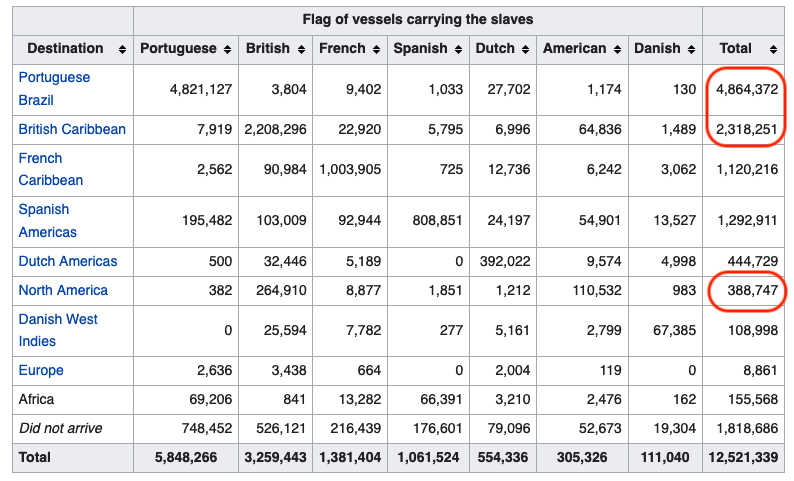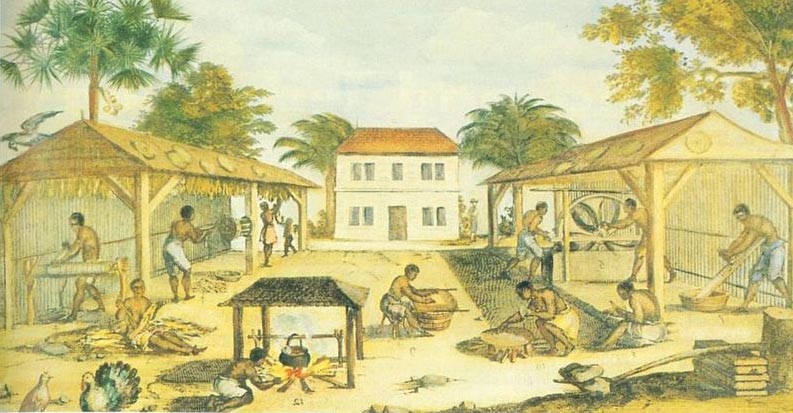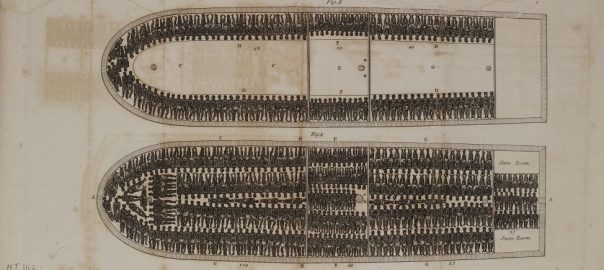1662 saw the tail end of many of the stories I covered last year. (King Charles actually got married to Catherine of Braganza in 1662, etc.)
There was not much that was new-new in the development of Western imperialism in 1662. Except this, which is certainly worth noting:
Settler councils in Barbados and Virginia implement ordinances to control the enslaved
In earlier years we have seen that the English settlers arriving in Virginia or wherever and stealing the land and resources of the Indigenes would establish some kind of local governing body and hail it as “an advance for democracy!” In 1661-62, the local governing councils in Barbados and Virginia pushed forward their campaign for “democracy” by enacting local laws to strictly regulate the situation of the many enslaved persons now under their (very tight) control.
Both of these settler-controlled territories had seen a great increase in the numbers of enslaved workers over preceding decades. Thus, the settler councils saw the need for these new ordinances. They differed from each other but signaled the fact that exploitation of enslaved workers had now become a much more central part of their respective projects.
1. Barbados
North American readers need to keep in mind that, in the total history of trans-Atlantic slavery, the islands of the Caribbean were the destination for many more enslaved Africans than was North America. For example, just the English/British-controlled part of the Caribbean imported nearly six times as many transported Africans as the whole of North America. (And then there were the French, Spanish, Danish, and Dutch-controlled parts of the Caribbean…)

Within the British Caribbean, Barbados was at the “forefront”, chronologically, of the process of using these small islands for industrial-scale planting and milling of sugarcane– massive undertakings that were built on the backs of enslaved labor, most of it performed by transformed Africans.
In Barbados, as Eric Williams has shown (see Table 2 below), between 1645 and 1667, a large number of small farming units, farmed by an only slightly larger number of “White” farmers (probably including both landowners and indentured laborers) was consolidated into a much smaller number of plantations, mainly growing sugar. Meantime, the number of “Negroes” skyrocketed from 5,680 to 82,023.
| Year | # of farming units | # of “whites fit to bear arms” | # of “Negroes” |
| 1645 | 11,200 | 18,300 | 5,680 |
| 1667 | 745 | 8,300 | 82,023 |
In 1661, Barbados was already 16 years– roughly two-thirds of the way– into this transformation, and the planters probably feared that the increasing proportion of enslaved persons working on their plantations might get rebellious. By the way, Williams and other historians note that the enslaved in Barbados included not only enslaved Africans but also non-trivial numbers of Indigenous people from the English colonies in New England or Virginia who had been captured by the settlers there and then transported down to the Caribbean. I am not sure if the plantocracy in Barbados considered these people also to be “Negroes”; it is very possible that they did.
In 1661, the Barbados governing council adopted An Act for Better Ordering and Governing of Negroes. English-WP tells us that it included these provisions:
“If any Negro or slave whatsoever shall offer any violence to any Christian by striking or any other form of violence, such Negro or slave shall for his or her first offence be severely whipped by the Constable.
For his second offence of that nature he shall be severely whipped, his nose slit, and be burned in some part of his face with a hot iron. And being brutish slaves, [they] deserve not, for the baseness of their condition, to be tried by the legal trial of twelve men of their peers, as the subjects of England are.
And it is further enacted and ordained that if any Negro or other slave under punishment by his master unfortunately shall suffer in life or member, which seldom happens, no person whatsoever shall be liable to any fine therefore.”
The historian Katharine Gerbner noted a few additional aspects of this legislation in her book Christian Slavery:
- When it adopted this code concerning Negroes in September 1661, the Barbados council also adopted a parallel code, An Act for the good governing of servants. These were the the non-Negro workers on the plantations and in the households of the planters, usually indentured servants working in supervisory positions. Gerbner guesses one intention of having two different sets of rules (with the one governing “Whites” being considerably less harsh) was to forestall any possibility of solidarity between the two groups.
- The Act for the better ordering of Negroes was, by order of the council, to be read out loud at all church services on the island twice a year, and the first such reading took place in February 1662. She notes that parish churches (for “Whites” only!) served as a communal space used to reinforce the concepts of “Christian” superiority.
- She also notes that in this ordinance as elsewhere in Barbadian public pronouncements, the state of being a “Christian” was placed in strict juxtaposition to that of being a “Negro”. (In fact a lot of her argument is that the “Protestant Supremacy” established by the English planters in the Caribbean antedated the concepts of “White Supremacy” that came later– to there and to the North American mainland.
Gerbner, Williams, and others have noted that the Barbados Slave Code of 1661 served as a model for the slave codes later adopted in other English colonies, such as Jamaica (1664), South Carolina (1696), Georgia, etc.
2. Virginia
The first large shipment of enslaved Africans brought into the young colony of Virginia had arrived in 1619. I don’t currently have figures for how many enslaved Africans were in the colony in 1661-62. But the number was probably far below that for Barbados, for two reasons: (1) The sugar-based plantation economy in Barbados was already far more developed than the tobacco-based economy in Virginia, and (2) The colonists in Virginia had far more access to enslaved Native Americans (Indians), than the planters in Barbados had to locally enslaved Indigenes.
Indeed, in looking at the nature of early White-run slavery in Virginia, it’s notable how important enslaved Indians were to to the colony’s first 80-100 years. The online Encyclopedia Virginia has an excellent page on “Indian Slavery” from which I learned the following:
Upon their arrival in 1607, the English initially sought to establish [a] tributary trading relationship with the Algonquian-speaking Indians of Tsenacomoco, a paramount chiefdom of twenty-eight to thirty-two small chiefdoms and tribes stretching from the James to the Potomac rivers. The Indians had food the English needed and the English provided tools, weapons, fabric, and copper-made items the Indians considered to be spiritually valuable. Indians labored for the English as indentured servants without clearly defined rights or lengths of service. Conflict soon weakened such relationships.
Then, after Opechancanough’s big anti-colonial uprising of 1622, the “friendly tributary approach” (as the E.V. describes it) decayed, and this happened:
a new English policy toward the Indians was born… and found expression in the official Virginia Company of London report of the 1622 attack, A Declaration of the state of the Colonie and Affaires in Virginia. Describing Virginia’s Indians as “a rude, barbarous, and naked people” who worship the devil, the report’s author argued that “the Indians who before were used as friends may now most justly be compelled to servitude and drudgery”…
Animosity and distrust was growing between the English and the Indians. Indians continued to provide labor under circumstances that, while legally unclear, often amounted to slavery. Everett has argued that deeds and wills from this time period indicate that Indians were inherited within white families and that they “were not indentured servants … Indisputably, and by 1661 at the latest, Indians could be—and were—lifelong servants.” In other words, they were slaves.
Only after the Third Anglo-Powhatan War (1644–1646) did Indian slavery become a lucrative part of the Virginia economy. The treaty ending the war defined the tribes and chiefdoms of Tsenacomoco as a tributaries and subject to English rule, requiring yearly payment to the crown and dictating where Indians could live, hunt, and trade. To coerce Indians to comply with the treaty, the English also demanded that Indian children “shall or will freely or voluntarily come in and live with the English”—serving as hostage-servants in English households. The English claimed they were educating and converting the children to Christianity as part of the tributary system, but many Indians complained that these children were subsequently sold on the slave market…
Not only were children being enslaved after the 1646 treaty, but the treaty’s provisions for English dominance led to the practice of enslaving Indians for legal violations and even as a means of financing war. For instance, when John Powell appealed to the General Assembly in 1660 for damages caused by Indians in Northumberland County, the assembly responded with a retribution act compensating him with the sale of Wicocomoco Indians, who would be “apprehended and sold into a fforraigne country”…
After 1646, Indian labor was more common in many forms, from child hostages to indentured servants to slaves. These enslaved Indians worked in the fields and as house servants, interpreters, hunters, and guides. English colonists preferred enslaved Indian women and children as domestic laborers, rather than African or white laborers, because they were considered easiest to train and control. Indian men were perceived to pose a greater risk of obstinacy and escape, and so they were often profitably sold to American buyers as far away as New England or to the sugar plantations in the West Indies (where they could not escape). The historian [C.S.] Everett has argued that when these external markets became available, financial incentive overtook vengeance as the primary driver of Indian enslavement. When the English colonists began to participate in an existing Indian trade that involved slaves and guns, Indian enslavement briefly became an important part of the colonial economy….
By late in the seventeenth century, African slaves were overwhelming the colonial market, providing more abundant labor with less internal conflict than enslaved Indians… The General Assembly still found a use for Indian enslavement however, when it punished the Nansiattico Indians in 1705 for a single murder by exporting the entire surviving Nansiattico community to Antigua for sale as slaves.

But certainly, there were also many more enslaved Africans in Virginia in 1661-62 than there had been in 1619– and because they had been transported so far from their home communities they were in many ways even more vulnerable to gross mistreatment by their “White” enslavers than the enslaved Indians were.
One form of gross abuse that enslaved women in Virginia were subjected to was rape by their enslavers. Over time, the rape of enslaved women became fully integrated into the strategic planning of the plantation owners, offering a profitable way to replenish or increase their enslaved workforce.
To what extent did this worry the (supposedly “Christian”) “White” enslavers? Apparently very little indeed. And from 1662 onwards, they had even less reason to worry about the effects of their truly “brutish” and cruel practices. That was the year in which their colonial “council” adopted this ordinance:
“WHEREAS some doubts have arisen whether children got by any Englishman upon a negro woman should be slave or ffree, Be it therefore enacted and declared by this present grand assembly, that all children borne in this country shalbe held bond or free only according to the condition of the mother…
This was new. In traditional European legal codes, the status of a child was inherited from her or his father. For the next 200 years, in Virginia and then throughout much of the rest of what would become the Southern United States, children born to enslaved mothers also had the status of enslaved— that is, they were saleable property of the enslaver just as much as their mothers were.
Hence, the incentive system was established for the widespread abuse of enslaved women as “breeders”. And hence, a “White” man like Thomas Jefferson could repeatedly rape an enslaved female in his household– who was herself the product of her mother’s rape by Jefferson’s father-in-law– and the offspring of those rapes were considered to be his property and added to his wealth.
